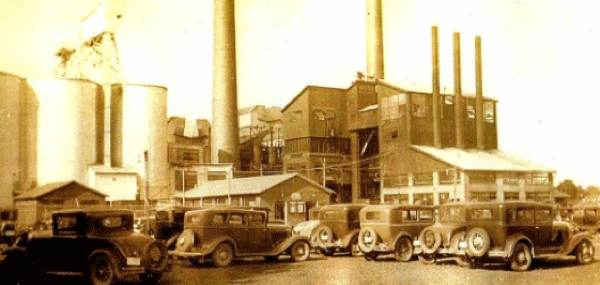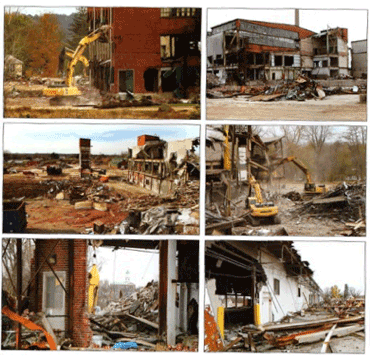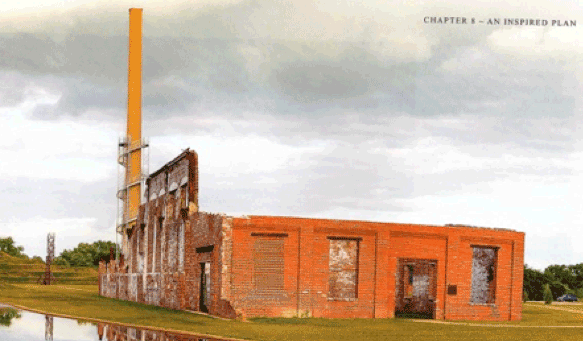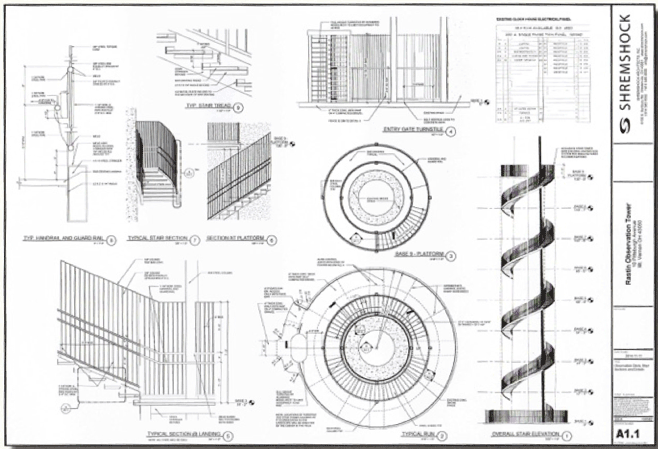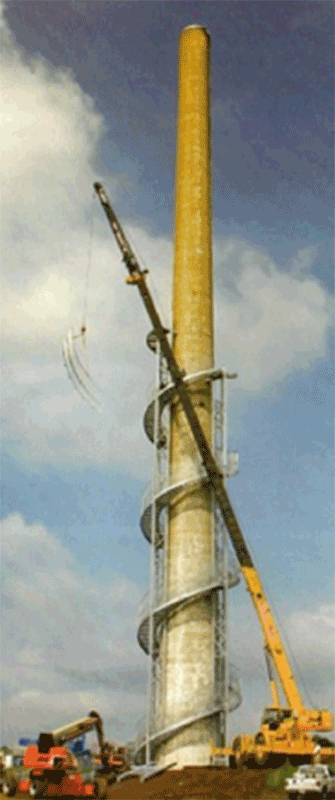Rastin Observation Tower
- Details
- Written by Guy Harder and Jessi Horsley
Introduction
Ariel-Foundation Park contains some of Mount Vernon’s greatest histories and treasures. What was once a deteriorating industrial site is now a well-known public park. The park was officially opened on July 4, 2015, and is now enjoyed daily by the people of Mount Vernon and surrounding counties.
Industrial History
Mount Vernon’s land, location, and natural resources made it a prime location for industrial sites. The land that Ariel-Foundation park now sits on was first used for a steel casting plant. When the steel plant failed, the land was quickly claimed by the glassmaking industry. Several businessmen tried to get their glassmaking factories up and running but they failed one right after another due to the poor state of the economy. Finally, by 1908 the Pittsburgh Plate Glass Company (PPG) officially owned the land and ran a successful glassmaking company until 1976. The factory was known as the Pittsburgh Plate Glass Company Works No. 11 (PPG). Between 1908 and 1976, the PPG factory grew and became one of the world’s largest glassmaking factories.
When PPG went out of business in 1976, a local businessman purchased the factory and leased out the old buildings as storage warehouses. However, the old factory buildings were too costly to maintain so the property was sold to another company. Again, the new owner realized the deteriorating buildings were of no use to his business, so he sold the property to the Foundation Park Conservancy. The Conservancy knew the unsightly buildings needed to be demolished if the park was going to attract any visitors. However, when the city of Mount Vernon was deciding on a theme for the new public park, they decided on an industrial theme to honor the site’s history. Today, many of the old factory walls remain intact and serve as a main attraction of the park. One particular attraction that still stands today is the old smokestack that is now known as the Rastin Observation Tower.
Slip Forming
The old 286-foot smokestack is one of Ariel-Foundation Park’s most amazing structures. The smokestack was built in 1950 and was utilized by PPG. The smokestack was constructed using a process called slip forming. Slip forming is a rapid construction technique in which concrete can be continuously poured to form a concrete structure. Slip forming is undoubtedly the fastest and most economical construction method available for high-rise concrete structures. It is also a very safe method 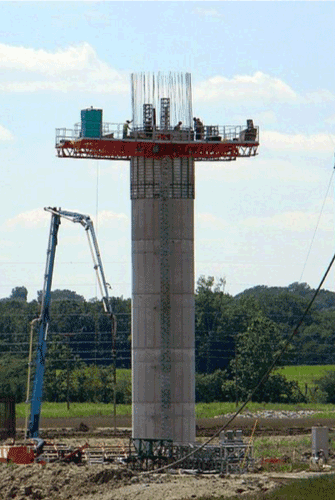 because it does not require assembling the framework with a crane at high elevations but, instead, the main framework is built at ground level and and the rest of the tower is built on this foundation. There are two types of slip forming methods. In vertical slip-forming the concrete form may be surrounded by a platform on which workers stand, placing steel reinforcing rods into the concrete and ensuring a smooth pour. Together, the concrete form and working platform are raised by means of hydraulic jacks. Generally, the slip form rises at a rate that permits the concrete to harden by the time it emerges from the bottom of the form. In horizontal slip forming for pavement and traffic separation walls, concrete is laid down, vibrated, worked, and settled in place while the form itself slowly moves ahead. The Rastin Tower was created using the vertical slip forming technique.
because it does not require assembling the framework with a crane at high elevations but, instead, the main framework is built at ground level and and the rest of the tower is built on this foundation. There are two types of slip forming methods. In vertical slip-forming the concrete form may be surrounded by a platform on which workers stand, placing steel reinforcing rods into the concrete and ensuring a smooth pour. Together, the concrete form and working platform are raised by means of hydraulic jacks. Generally, the slip form rises at a rate that permits the concrete to harden by the time it emerges from the bottom of the form. In horizontal slip forming for pavement and traffic separation walls, concrete is laid down, vibrated, worked, and settled in place while the form itself slowly moves ahead. The Rastin Tower was created using the vertical slip forming technique.
The Rastin Observation Tower
The city of Mount Vernon wanted to turn the smokestack into an observation tower that overlooked the park. The smokestack was structurally sound, but it needed some repairs. This made the smokestack project the most challenging park project.
In order for the smokestack to be turned into an observation tower, visitors needed to be able to climb up the tower. Engineers and architects quickly went to work designing and fabricating a spiral staircase that reached halfway up the tower. The stairway sections had to be bolted together in place while suspended from a crane. Even a slight variation between one section and the next created problems for the installation crew. At times, it took ingenuity and persistence to persuade the bolt holes to line up.
The iconic smokestack is now referred to as the Rastin Observation Tower and it is enjoyed by many park goers. The observation deck sits 140 feet in the air and visitors are able to admire the entire park from a bird’s eye view.
Conclusion
The old smokestack, and its Rastin Observation Tower, is one of Ariel-Foundation Park’s most iconic features. Thanks to sound engineering practices and the slip forming method, the smokestack observation tower will be enjoyed by people for many years to come.
Keirns, Aaron J. Ariel-Foundation Park. Foundation Park Conservancy, 2015.
“Slipforming.” Bygging, www.bygging-uddemann.se/slipforming/.
“Slip Forming.” Wikipedia, Wikimedia Foundation, 5 Feb. 2018,

